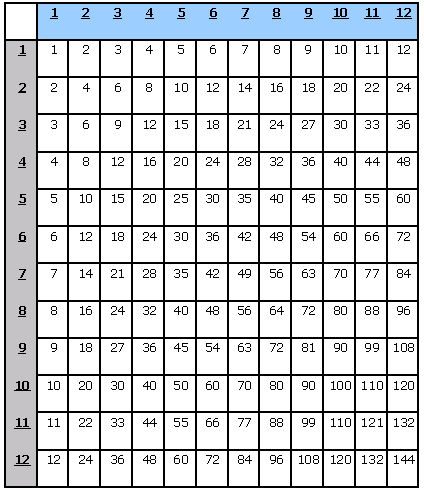Multiplication Tables Teaching Material
Instructions

Use of the Table
To use this table, take a number along the top axis and multiply it by a number along the side axis. Where they intersect is the answer to the equation. An example of this is 7 x 3. If you find 7 on the side axis and follow the row until you reach the 3 column on the top axis, you will find the answer – 21.
Hints for Understanding
Look for simple patterns to assist your memorization efforts. For example:
Whenever 10 is multiplied to another number, just add a zero.
10 x 3 = 30
10 x 7 = 70
10 x 10 = 100
10 x 12 = 120
Whenever 11 is multiplied by a number less than 9, just double the digit 11 is multiplied by.
11 x 3 = 33
11 x 5 = 55
11 x 7 = 77
11 x 9 = 99
One multiplied by any other number is always equal to that number.
1 x 1 = 1
1 x 4 = 4
1 x 8 = 8
1 x 12 = 12
Zero multiplied to any number is always zero.
0 x 10 = 0
0 x 3 = 0
10 x 0 = 0
16,000 x 0 = 0
Nine multiplied by any number less than 11 adds up to 9.
9 x 3 = 27 (2 + 7 = 9)
9 x 9 = 81 (8 + 1 = 9)
Most people are able to count by 2's, 3's and 5's very quickly so memorizing these times tables should be very easy.
